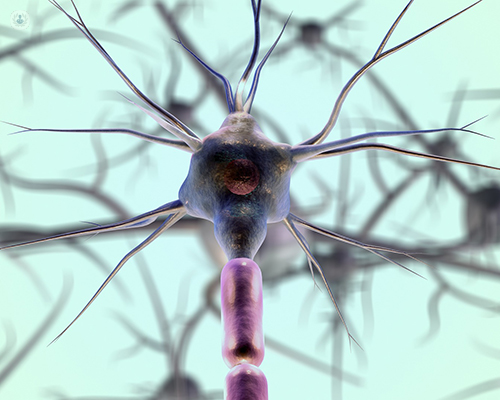What are the benefits of radiofrequency neurotomy?
Autore:In his latest online article, highly experienced sports medicine specialist Dr Ralph Rogers explains the incredible pain-relieving benefits of radiofrequency neurotomy. He delves into how this treatment works, what the procedure entails and the results patients can expect.

What is radiofrequency neurotomy and why is it carried out?
Radiofrequency neurotomy is a pain-relieving treatment. It involves administering an injection utilising a specialised machine that produces radiofrequency current. This current is then directed through a needle positioned adjacent to the medial branch nerve, which is responsible for transmitting pain from the facet joints to the spinal cord. The ensuing heat disrupts the transmission of pain. Radiofrequency neurotomy is usually offered as a subsequent treatment if the patient has derived benefit from diagnostic medial branch nerve blocks.
How is the procedure conducted?
The procedure occurs under X-ray guidance with the patient positioned on their stomach. An antiseptic solution is applied to the skin, which is subsequently anaesthetised with a numbing medication.
Once the skin is numb, needles are strategically positioned near the target nerve, guided by X-ray imaging. The nerve is then numbed before initiating the radiofrequency neurotomy. Typically, three nerves are targeted, resulting in three injections during the procedure.
Will the injection cause discomfort?
There may be some discomfort during needle insertion, which is minimised by numbing the skin over the joint with a local anaesthetic.
What is the duration of the effect?
The anticipated effect is expected to last for an extended period (on average, one year). Some escalation in back pain is likely over the days following the injections, followed by subsequent pain alleviation.
What follows the injection?
A follow-up appointment will be scheduled to evaluate the effectiveness of the treatment. If the treatment proves ineffective, alternative treatment options will be evaluated.
What are the risks and side effects?
Serious complications are infrequent. The most prevalent issue post-injection is experiencing pain in the injection area for a few days. Other potential complications encompass infection, bleeding, and nerve injury. Adherence to sterile technique and the use of fluoroscopy for x-ray needle guidance serves to mitigate these complications.
If you would like to book a consultation with Dr Ralph Rogers, you can do so today via his Top Doctors profile.


